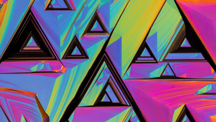Oiled Ruby: A Remarkable Visual
As laboratory gemologists working in Bangkok, we often encounter gems that have been treated with oil to minimize the appearance of fissures. Most of these stones come from Myanmar, where many vendors consider oiling an accepted standard procedure to enhance their goods, particularly ruby and spinel (http://www.lotusgemology.com/index.
php/library/articles/315-lotus- gemology-lab-alertfor-oiled-gems). Furthermore, red oil is commonly used not only to improve clarity, but also to enhance the color of the stone (in Chanthaburi, Thailand, it is sold under the brand name “King Ruby Red Oil”). Often this treatment can be identified by flattened gas bubbles in the fissures or by droplets of oil seeping out of the fissures on the surface when the stone is gently warmed by microscope light or hot point.
The image above shows a small surface-reaching cavity filled with oil in an unheated 1.75 ct ruby from Myanmar. Unlike other examples we have seen, this remarkable gem contained enough of the filler to easily photograph the striking red color of the oil itself within the cavity. With oblique fiber-optic lighting, a stunning image of this enhancement in situ was made possible, turning even an otherwise commonplace forensic determination into an aesthetic exploration of the micro-world.



